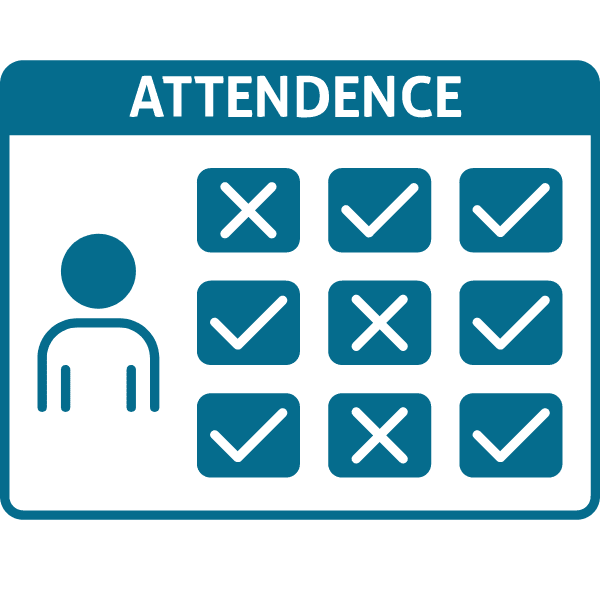In today’s fast-paced world, work-life balance has become more of a myth than a reality. With that, we’re seeing more and more signs of overworked employees. Prolonged exposure to work-related stressors can lead to a state of physical, emotional, and mental exhaustion known as employee burnout.
It can have a significant impact on an individual’s well-being and productivity. It can even lead to absenteeism, low morale, and high turnover rates. However, employee burnout is preventable, and recognizing the signs of an overworked employee is the first step to prevent it.
What does Employee Burnout happen?

Employee burnout happens due to prolonged exposure to workplace stressors, including;
- heavy workloads
- long hours
- lack of control over work
- unclear job expectations
- lack of support from colleagues or supervisors
- workplace conflict
Burnout can also occur when employees feel undervalued or unsupported by their organization, leading to a sense of disengagement and apathy towards work. Additionally, personal factors, such as financial stress, relationship problems, or health issues, can also contribute to employee burnout. It’s important for employers to recognize the various signs of an overworked employee and take steps to address them to prevent the negative consequences on employee well-being and organizational productivity.
What are the signs of an overworked employee?
1. Decreased Productivity
One of the most significant signs of an overworked employee is a decrease in productivity. Overworking employees reduces their efficiency and increases the time taken to complete tasks. They may also make more mistakes, which can lead to frustration and a further decrease in productivity. According to a study by the American Institute of Stress, Job stress is estimated to cost the US industry more than $300 billion in losses due to absenteeism, diminished productivity, and accidents. That leads us to our next point.
2. Increased Absenteeism

Another sign of employee burnout is increased absenteeism. Overworked employees may feel physically and emotionally drained, making it challenging to show up for work. Studies show that unscheduled absences cost organizations an average of 9.2% of their payroll each year. Or, if you like to talk money, the yearly cost of employee absenteeism is 225.8 billion dollars. Absenteeism can cause a domino effect of lots of other issues for your organization so should be taken seriously. If an employee is persistently absent, it is a tell-tale sign they are overworked.
3. Reduced Engagement
Employees who are overworked may become disengaged from their work, leading to a lack of motivation and enthusiasm. They may feel as though they are just going through the motions and not contributing anything meaningful to the organization. According to a Gallup, although it has increased slightly, only 32% of U.S. employees are engaged at work, and burnout is a significant factor in this low number.
4. Increased Irritability
When employees are overworked, they may become easily irritated and short-tempered. They may snap at coworkers, managers, or customers, which can lead to conflicts and a negative work environment. A study by the American Psychological Association found that 57% of employees indicated experiencing negative impacts because of work-related stress.
5. Lack of Creativity
Another of the signs of an overworked employee is that they may not have the mental energy or creativity to come up with new ideas or solutions. They may feel stuck in their work and unable to think outside the box. This lack of creativity can lead to a stagnant work environment and a lack of innovation. According to a study by Accenture, 96% of executives said that innovation is critical to their organization’s success, but only 48% said that their organization is actively pursuing innovation.
6. Physical Symptoms

Employee burnout can also manifest in physical symptoms such as headaches, back pain, and stomach problems. When employees are overworked, their bodies may become tense and stressed, leading to these physical symptoms. According a historical study by the World Health Organization, working more than 55 hours can be attributed to coronary artery disease, and, or stroke.
7. Emotional Exhaustion
Finally, one of the most significant signs of employee burnout is emotional exhaustion. When employees are overworked, they may feel emotionally drained and unable to cope with the demands of their job. They may experience feelings of hopelessness, helplessness, and cynicism, which can lead to depression and anxiety. According to research by the National Institute for Occupational Safety and Health, 40% of workers reported their job was very or extremely stressful.
Want to help an overworked employee?
Employee burnout is a serious issue that can have significant consequences for both employees and employers. Recognizing the signs of overworked employees is the first step in preventing employee burnout. By addressing these signs early on, organizations can take steps to reduce stress and improve employee well-being, ultimately leading to increased productivity and job satisfaction.
Employers can take several steps to prevent employee burnout, including providing employees with more autonomy and control over their work, offering flexible work arrangements, promoting a healthy work-life balance, and providing employee assistance programs. By creating a supportive work environment that values employee well-being, organizations can reduce the risk of burnout and improve employee engagement and retention.
In summary, recognizing the signs of overwork is essential to prevent employee burnout. By addressing these signs early on and implementing strategies to reduce stress and promote employee well-being, organizations can create a positive work environment that benefits both employees and employers. Ultimately, preventing employee burnout is not only the right thing to do, but it’s also good for business.





